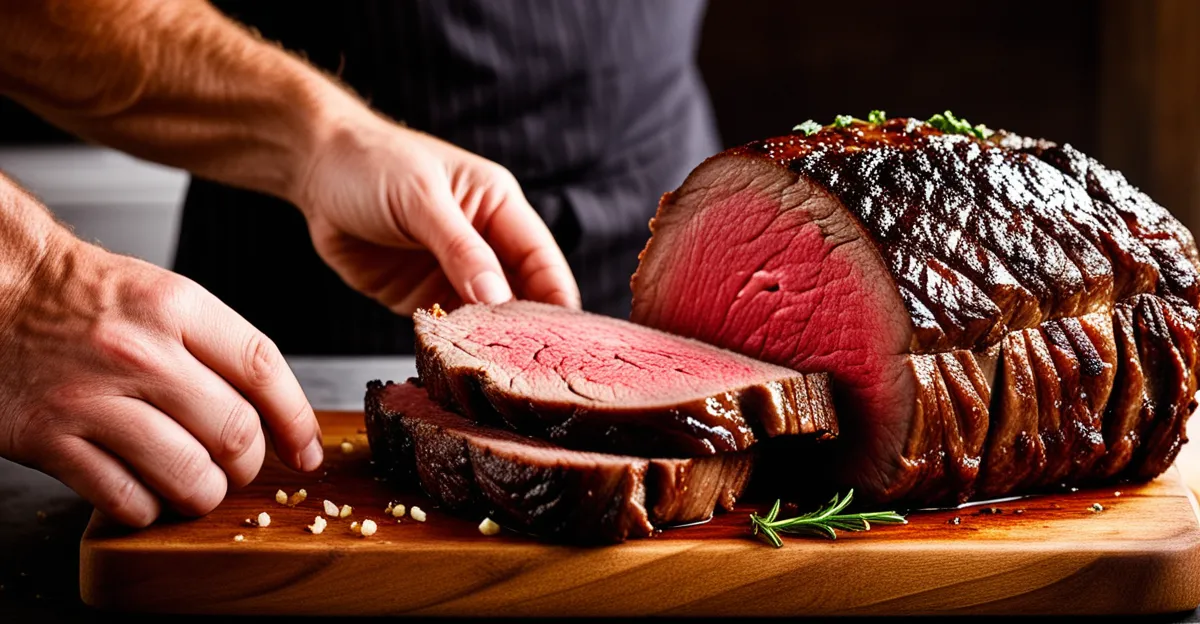Essential Steps for Cooking Tender Roast Beef
Achieving tender roast beef begins with choosing the right cut. Cuts like ribeye, sirloin, chuck, or tenderloin are considered the best choices for roast beef because their marbling and muscle structure directly influence tenderness. Marbling—the fat within the meat—helps keep the beef juicy through cooking, a critical factor when aiming for a succulent roast.
Preparation is equally important. Before cooking, allow the meat to reach room temperature. This ensures even cooking, preventing a dry exterior and undercooked interior. Seasoning the beef uniformly with salt, pepper, and your preferred spices enhances flavor and can aid in tenderizing. Marinating, especially with acidic components like vinegar or wine, can break down tough muscle fibers, contributing to tender roast beef.
Additional reading : How can you make a gluten-free version of a classic scone?
Cooking temperature and timing are pivotal. Low and slow is a proven approach: roasting at moderate oven temperatures or using a slow cooker for several hours promotes gentle heat penetration. This avoids overcooking while giving collagen time to convert into gelatin, which softens the meat fibers. Combining these best practices for roast beef guarantees a tender, flavorful result every time.
Selecting and Preparing the Beef
Choosing the best beef cuts for roast is crucial to achieve tender roast beef. Ribeye, sirloin, chuck, and tenderloin consistently rank as top choices because of their favorable muscle structure and marbling. Marbling refers to the fat dispersed within the meat, which melts during cooking to maintain juiciness and enhance tenderness.
Have you seen this : What are the essential techniques for a perfect fish and chips?
Proper preparing roast beef involves trimming excess fat and silver skin carefully, which allows seasoning to penetrate better and improves texture. Marinating is another effective technique; using acidic ingredients like vinegar, wine, or citrus juices breaks down tough muscle fibers, making the meat tenderer while adding flavor complexity.
Seasoning should be even and generous—salt, pepper, and herbs create a flavour base that penetrates during cooking. Before roasting, letting the beef come to room temperature stabilizes internal heat during cooking. This prevents uneven cooking, which can lead to tough areas. Together, these best practices for roast beef preparation set the foundation for succulent, tender results that are easier to cook optimally.
Cooking Methods and Temperature Control
Maintaining precise roast beef cooking methods is crucial for tender roast beef. For oven roast beef, preheat your oven to between 325°F and 350°F (162°C to 177°C). This moderate heat allows gradual collagen breakdown, making the meat tender without drying it out. Insert a meat thermometer to monitor the internal temperature closely. For medium-rare, remove the roast at 130°F to 135°F (54°C to 57°C), as carryover heat will raise it slightly during resting.
Slow cooker roast beef offers a hands-off approach, ideal for tougher cuts like chuck. Set the cooker on low and cook for 6 to 8 hours. This slow roasting converts collagen into gelatin, ensuring a juicy, tender result. Always check roast beef internal temperature—140°F (60°C) for medium or 160°F (71°C) for well-done—to suit your preference while preserving tenderness.
Resting the roast beef is vital. After cooking, let it rest for 15 to 20 minutes under foil to redistribute juices and avoid dryness. This step complements any cooking method and enhances tenderness. Employing these best practices for roast beef temperature control ensures consistently flavorful and tender results every time you cook.
Tips for Achieving Consistently Tender Results
Achieving tender roast beef requires mastering some key roast beef tips and avoiding frequent errors. One common mistake is overcooking. Even the best cuts become tough if internal temperatures exceed recommended levels. Using a reliable meat thermometer helps monitor doneness precisely, ensuring you cook the beef just enough for optimal tenderness. For medium-rare, remove the roast between 130°F and 135°F; cooking beyond this risks dryness.
Another vital tactic is allowing roast beef to rest after cooking. Resting for 15 to 20 minutes lets juices redistribute, preventing moisture loss when slicing. Speaking of slicing, cutting against the grain is an expert cooking advice that maximises tenderness. This breaks muscle fibers into shorter segments, making each bite softer.
Additionally, selecting the right cut based on intended cooking methods enhances results. For example, chuck benefits from slow roasting, while tenderloin suits quicker, high-heat techniques. Paying attention to timing and heat control complements these choices.
In summary, combining precise temperature monitoring, proper resting, and thoughtful slicing techniques forms the cornerstone of best practices for roast beef that yields consistently tender and flavorful results every time.







